Myths Debunked: Fenders DON’T Slow You Down
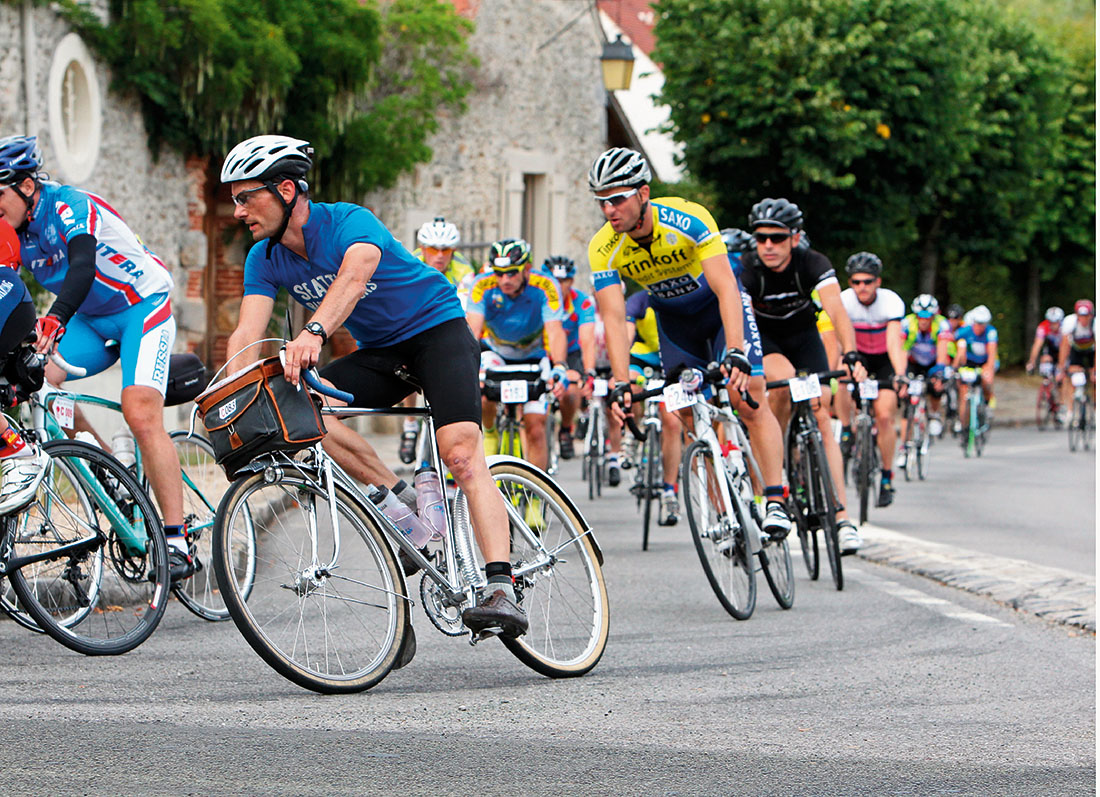
To celebrate 15 years of Bicycle Quarterly, we are looking at ‘Myths in Cycling’ – things that aren’t quite what we (and most other cyclists) used to believe. Part 3 of the series is about fenders.
Many cyclists here in Seattle install fenders when the rainy season starts, and remove them for the dry summer months. British time trialists even had quick-release fenders that they used on the ride to the start; then they took off the fenders for the actual competition. Our research indicates that this isn’t necessary – fenders don’t slow you down. Here is why:
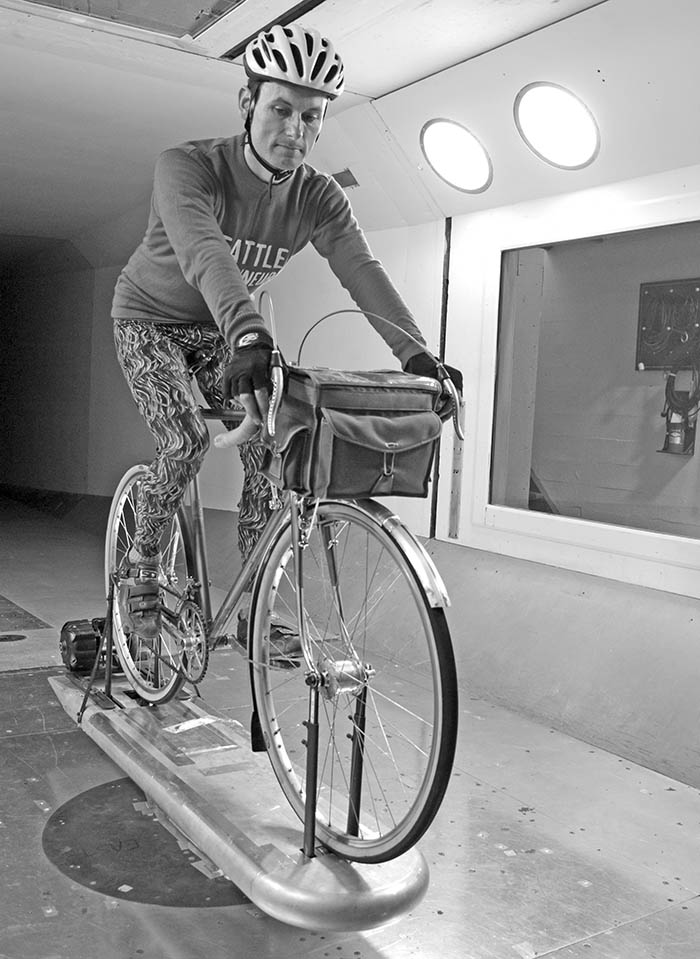
Aerodynamics
Bicycle Quarterly did extensive wind tunnel research on the aerodynamics of real-world bicycles. Among things like riding position, clothing and bags, we tested the aerodynamics of fenders. We made a telescoping front fender, which allowed us to test various configurations. Here is what we found:
- The portion of the fender in front of the fork crown reduces the drag. This is because the tire rotates at twice the speed of the bike, and the fender acts as a fairing that shields it. This works only if the fender extends beyond the top of the tire and drops down in front. (We found that it’s not necessary to extend the fender as far as shown in the photo above.)
- The portion behind the fork crown adds a little drag. So does a mudflap.
- The overall effect of the full fender and (small) mudflap neither increases nor decreases the wind resistance of the bike.
If this comes as a surprise, check out modern Moto GP racing motorcycles (below). They all have fenders covering the forward-facing portions of their tires to improve their aerodynamics. Bicycle racing specifically prohibits fairings, otherwise we might see similar fenders in the Tour de France…
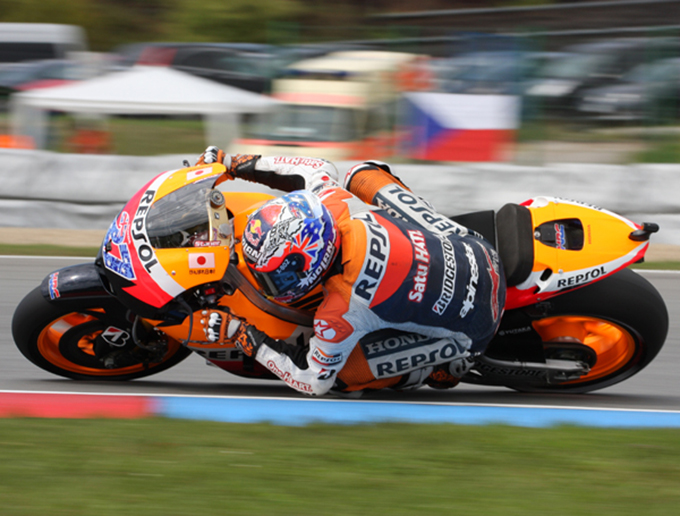
Weight
What about the added weight of the fenders? The best fenders don’t weigh much: Rene Herse aluminum fenders provide generous coverage, yet they weigh between 423 and 540 g, depending on the width, including all the hardware to attach them. That is roughly the weight of half a bottle of water. The increased versatility of having fenders on your bike is well worth the extra weight – just like a water bottle will slow you down in theory, but in practice, you won’t notice whether your bottle is full or half-empty.
Plastic fenders weigh more – they are more flexible, so they need heavier stays made from steel, whereas the stiffer Rene Herse fenders use lightweight aluminum stays. Weight-wise, the worst are aluminum fenders with heavy stays designed for plastic fenders – many weigh 50% more than their Rene Herse equivalents, despite offering less coverage.
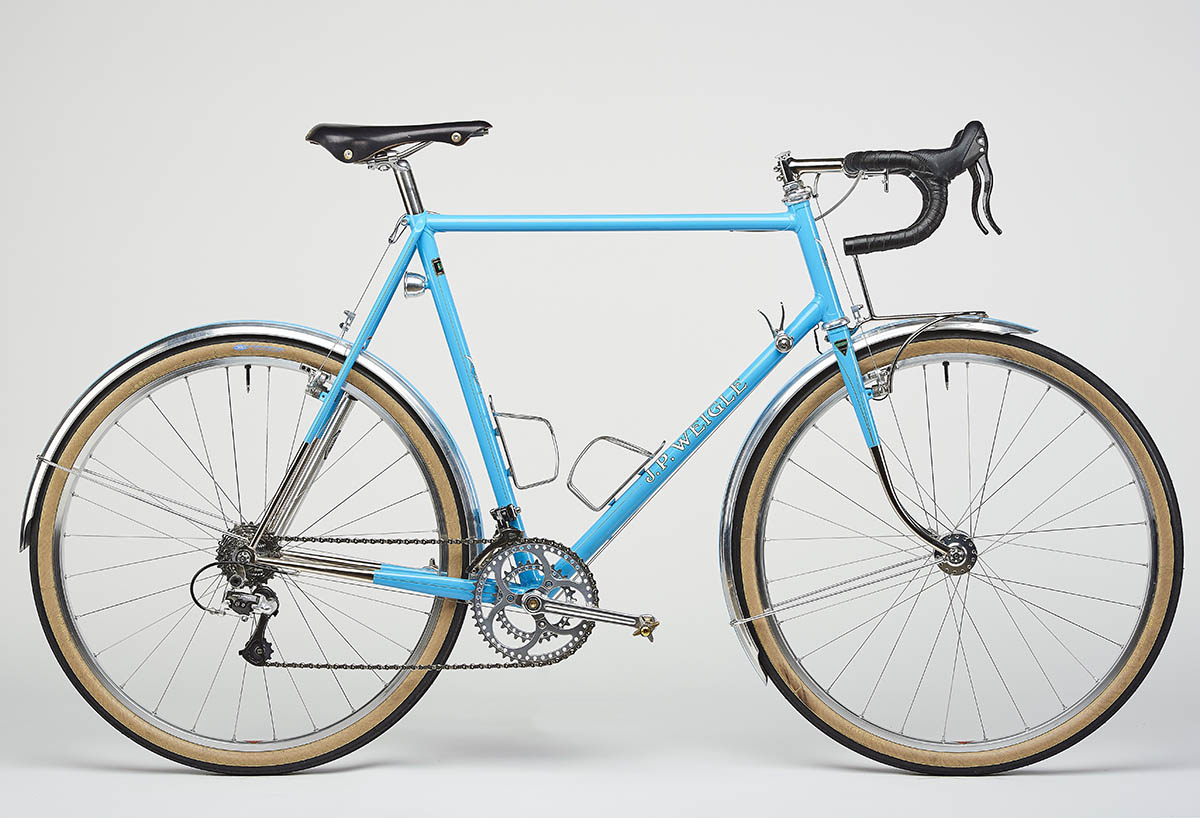
Reasons not to Use Fenders
There were other reasons why I used to take my fenders off the bike every spring. The plastic fenders I used back then resonated on rough roads. They tended to rub on the tires. The gaps around the tires were uneven, making the fenders look like an afterthought. And every few thousand miles, the rear fender broke and needed replacement. During the summer months, I wanted to enjoy a quiet, smooth and sleek-looking bike. And if that meant getting soaked during the occasional downpour, it seemed worth the trade-off.
With a bike that is designed from the get-go for fenders, like the J. P. Weigle from the Concours de Machines (above), those drawbacks no longer exist. The metal fenders are stiff, so they are quiet. The bike is designed with sufficient clearances, so the tire never rubs on the fender. The fenders follow the outlines of the tires, so they enhance the appearance of the bike. And since the fenders are securely mounted without stresses, they will last as long as the bike. (And the whole bike weighs just 9.1 kg/20.0 lb, so the weight isn’t an issue, either.)
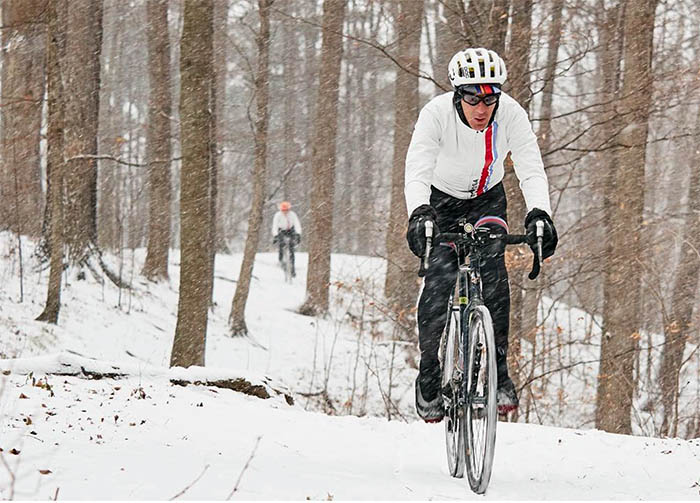
There are some conditions where bikes without fenders work better: deep mud and snow – the same conditions that call for knobby tires. For all other rides, I prefer a bike with fenders, because it gives me the option of heading out even when the weather forecast is uncertain. And I am glad to know now that the fenders won’t slow me down.
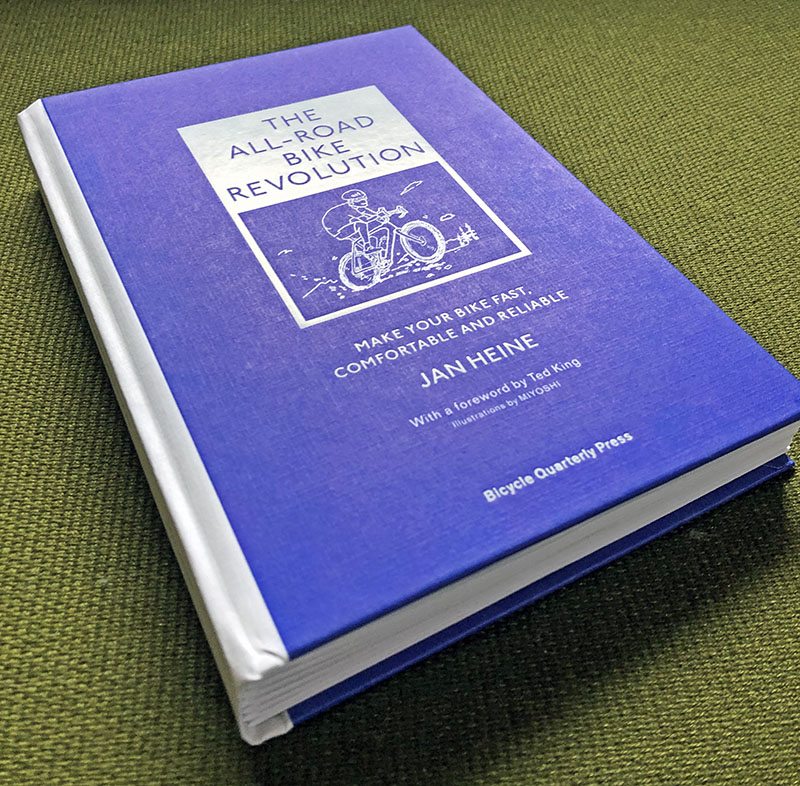
Update 11/17/2020: We’ve just published our new book ‘The All-Road Bike Revolution’ with all the research that has changed cycling in recent years. Find out why wide tires can be fast, how to find a frame that optimizes your power output, and how to get a bike that handles like an extension of your body. More information is here.
Photo credits: Maindru (Photo 1), Alex Wetmore (Photo 2), Motoracereports (Photo 3), Nicolas Joly (Photo 4), Mariposa Bicycles/Walter Lai (@onlywalt, Photo 5).


